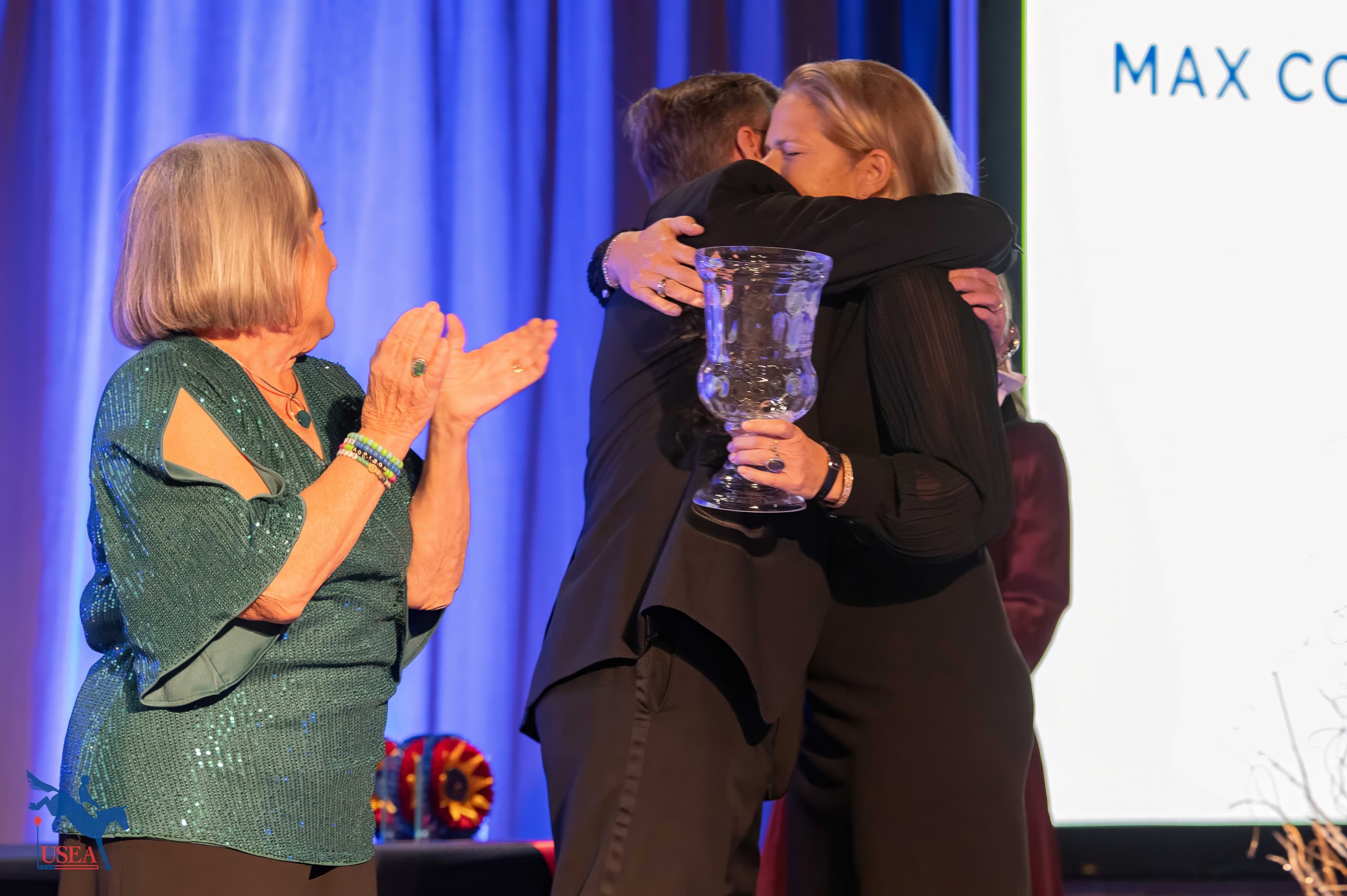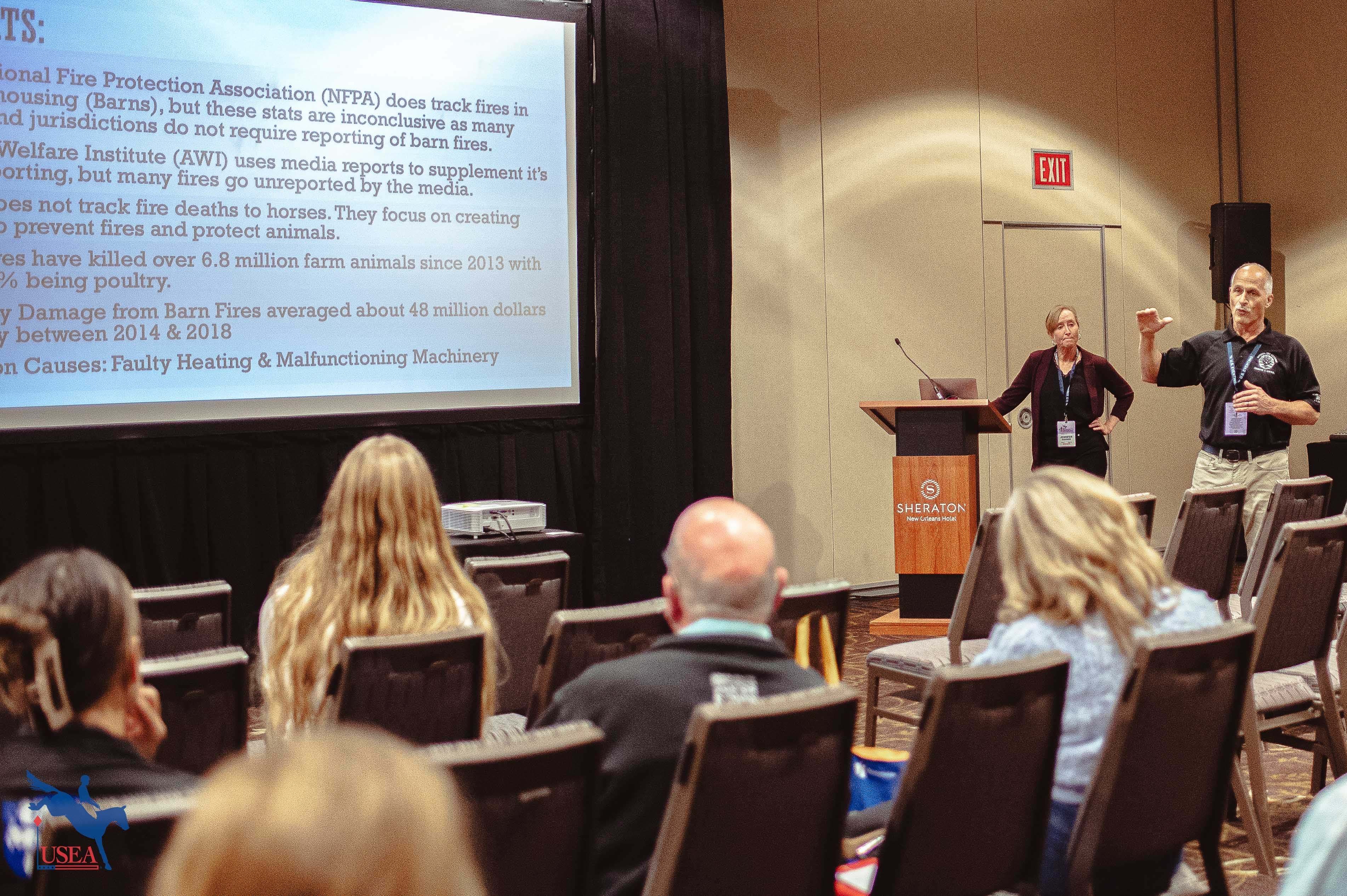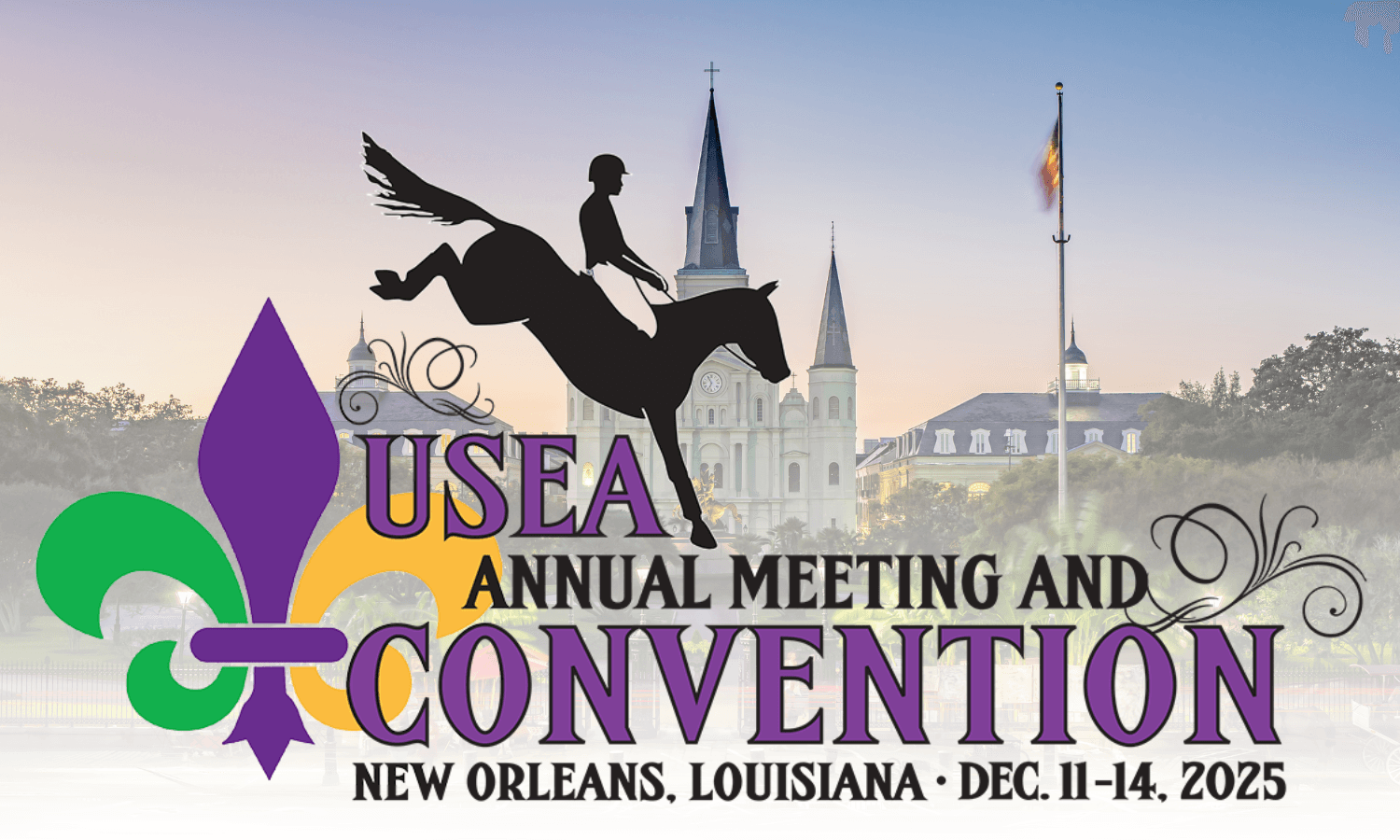Learning a Different Perspective with Chris Bartle
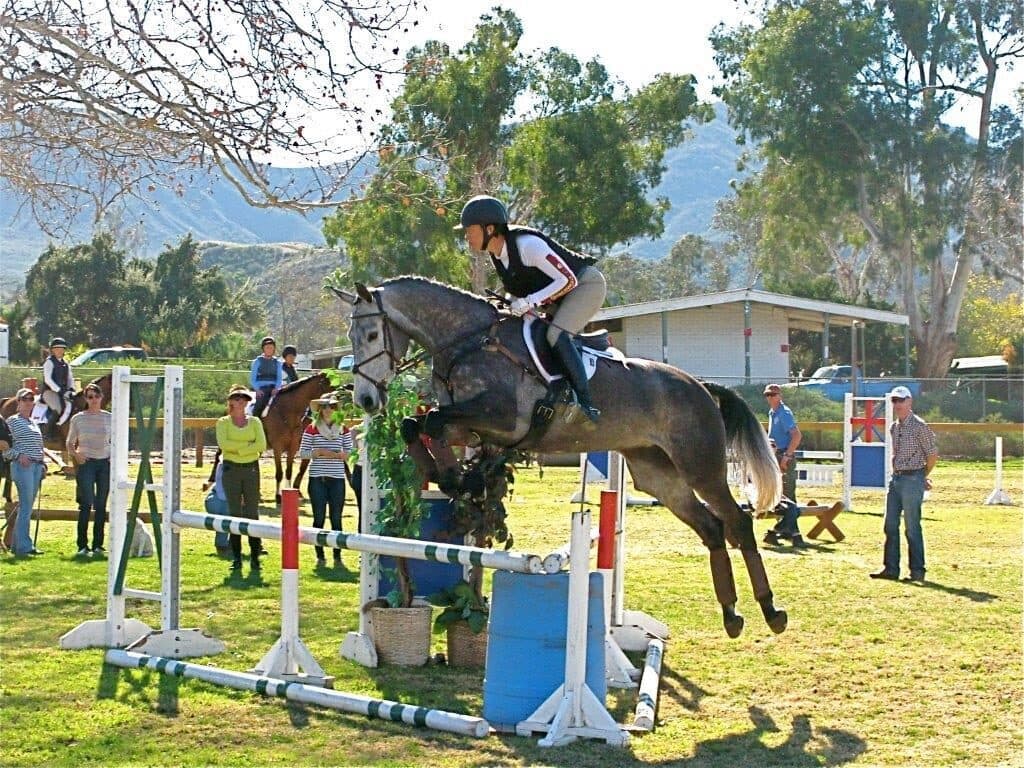
The USEA Instructor Certification Program’s (ICP) Symposia with German national eventing coach Chris Bartle was an immense success on both the east and west coast. One of the most successful Olympic coaches in the history of eventing, Bartle spread his breadth of knowledge on the west coast at Galway Downs in Temecula, Calif., and on the east coast at Longwood Farm in Ocala, Fla.
The USEA would like to thank Area VI Chair, Bea di Grazia, for bringing Chris to the U.S. While an in-depth article from the east coast symposium will be printed in the March/April issue of Eventing USA, ICP-certified instructor Julie Hook, from Aurora, Ore., generously took the time to prepare the following notes from the west coast session.
Like rattling the bit to get a horse’s attention, Chris Bartle rattled our minds with a different but clear and effective perspective. In his opening remarks, Chris explained that the training system of the horse and rider is same for all three phases:
- Develop a partnership with the horse.
- The rider is the leader.
- The horse is responsible for carrying itself, for balance, and for handling the jump.
The essence of the partnership is such that if one makes a mistake, the other fills in.
In a calm, steady, and pleasant delivery, he started the first day by working on dressage as it relates to show jumping. Emphasis was on turning the horse with legs and seat, and establishing connection through submission on the outside rein. What many riders and participants found different was his explanation of opening the inside hip joint to allow the lower leg to be more effective, at the same time 'jumping across the saddle' (sliding the seat and weight across the saddle) to the inside to turn the horse. Because many horses needed more connection with the outside rein, he sent the riders into the corners with outside flexion and inside leg. The end result, as explained in later groups while working on lateral movements, was that the horse shows proper bend, but this is achieved after much attention to submission and connection with the outside rein.
The sessions started with cavaletti work at the walk, trot and canter with emphasis on rhythm, balance and lengthening the reins to allow the horses to stretch to the bit with relaxation. Throughout the sessions, he moved from the jumping area to the dressage arena, made possible by the wonderful setup at Galway Downs. Always the emphasis was on sitting to the inside, keep the horse's head to the outside, use the inside leg to push the haunches under, and keep a steady rhythm. Martingales were removed at the beginning and preference noted for snaffles or bits without much free play.
As the jumping exercises progressed, the riders were encouraged to finish every exercise with dressage, whether through some work in canter, or the focusing on the quality of the downward transition, or straightness and stretching over the back.
Some of his directives were: "Use your legs for impulsion and your seat for length of stride. Never pressure on both sides of the mouth at once; move the bit with the fingers, but never kill the bird in your hand, nor let it fly away. Jump across the saddle to the inside as you change leads over a cavaletti."
Chris said that the connection with the horse is through the language of touch: through the bit, legs and seat, as well as the voice, and that the aids are applied in a breathing rhythm with the horse's movement. They should never be applied for longer than the duration of one step.
His directions were very concise and he conveyed crystal clear expectations. If something went wrong, he calmly gave directions for another try. Forward riding was emphasized throughout the two days, stressing that if a horse gets strong the rider must not pull, but rather bend outside and use leg and seat to compress, only using the hand to move the bit to soften the poll. He told some riders to "stay cool, the horse must feel your relaxation. Riders are responsible for making horses rush when they get nervous about arriving at the right take off distance."
"Impulsion creates options," was another frequent comment. If the horse has the right tempo and balance, it will choose the right distance for that horse at that moment. If the rider wants to influence the distance, it must be done by changing the canter in the approach, but never with the hands taking back or pulling. Lengthening the reins was often suggested as well as staying still over the top of a fence and riding away from the fence in the same rhythm as the approach. The idea that the horse is responsible for choosing the distance was different for some riders, but Chris shed light on that concept by reiterating that if the rider creates the right impulsion and balance, it is more feasible to read what distance the horse chooses at takeoff.
Frederic Bouland, a Level III ICP instructor from Arizona, summed up Chris' style succinctly, saying, "I think Chris is the perfect mix between the German Discipline and the Latin Philosophy.”

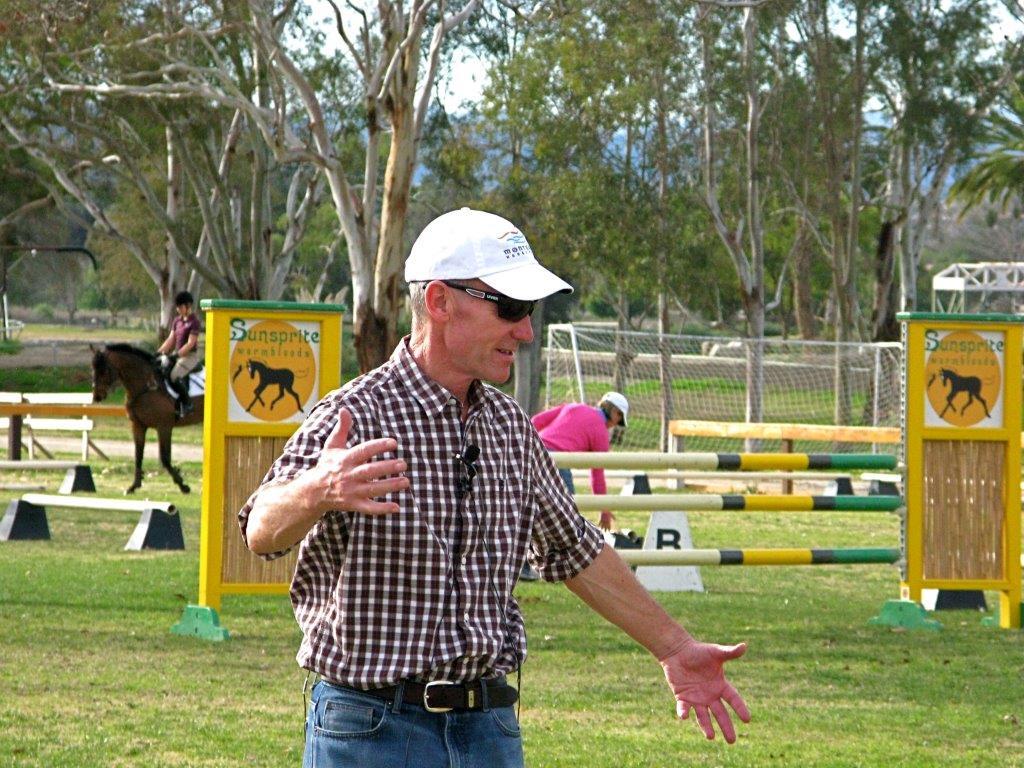
On Friday evening, we were treated to a slide show of Chris’s Rules for Cross Country Riding. The Rules began with:
1. Preparation
- Line, speed, length of stride to suit the fence
- Flex to outside, light seat, but close to saddle, active leg
2. Action
- Depending on horse and fence, drive or sit still, and energize
- Use seat to monitor length of stride
3. Safety Seat
- Also called the ‘Oh S#*!’ position, or Row 24, as he refers to sitting in the back of the plane for take off
- By sitting on the back of the saddle and lengthening the reins, especially at the water or downhill fences, the rider encourages the horse to lengthen the neck and raise the nose, improving the balance.
Discussion of stirrup length ensued, and he explained how short stirrups help the rider sit in the back seat to create proper balance and increase the correct use of the seat and core muscles for controlling speed and the length of stride. Additionally, Chris spoke of taking the horse’s head to the outside to control speed (always in conjunction with the inside leg) to produce straightness before the jump. A rider’s eyes should look well ahead of the jump, using peripheral vision to find the fence, but allowing the horse to choose the distance.
The slide show had video clips of riders clearly demonstrating the rules for cross country riding as well as one of a teeter-totter with a saddle attached that he uses at home to demonstrate to riders the influence of their body position on the horse's balance. We were surprised by the final video of motorcycle racing, which showed the riders turning their inside hip out, sliding their seats to the inside on the turns, and the front wheel turning outward.
When the cross-country sessions began on Saturday, reins were bridged and stirrups shortened before the riders were guided through Dressage movements, creating impulsion and encouraging their horses to work over their backs. Chris encouraged longer reins, never letting the hands be forward of the eyes. As skinnies were introduced, he advocated widening the hands to form a V on the approach, but always stressed thinking about Dressage on the approach and softening the poll, until the horse locks on to the fence and raises its poll in order to see better.
If a rider wanted to pull when a horse became strong, he suggested taking the head to the outside and moving the bit but keeping the hands down, with elbows pinned against the body and using seat muscles and leg to hold the horse.
Moving out to the water complexes on the cross country course, riders were briefed on where their preparation phase should begin, when they should slip the reins, where their eyes should look and when to get to the back of the saddle. As on the first day, all horses and riders became smoother, better balanced and more effective with Chris's instructions. He stressed that extra strides taken in turns add seconds and that leaving a jump in the same rhythm is important in saving time. His insistence on sitting still over the top of the fence prevented the rider from wasting time recovering his or her position after the fence, and riding with a longer rein clearly kept the riders from being pulled forward on landing.
Demo rider Lauren Billys said that Chris changed her position dramatically and as a result, she felt much more stable as well as effective. Matt Brown noted the methodical and clear system of the use of aids. While he found that much of what Chris teaches is familiar, the demands for attention to detail and accuracy of the aids is greater than from other instructors. Matt felt that the biggest change from previous instruction was the lengthening of the reins and staying further back, but he did say that he felt better in that position.
For many other attendees, jumping across the saddle and weighting the inside stirrup to turn was different, and there is sure to be some healthy conversation and experimentation at home in the coming weeks.
When Chris was asked what he sees as the fundamental difference between the American riders and the Germans, he was too polite to answer but admitted that until this symposium, he had really not paid attention to any riders but his own. He said that when he is coaching his team, he only focuses on how they are doing and on producing the best result possible. But he did say, with a big smile and not too apologetically, "We won and you lost!" Clearly, his system works, and it was extremely generous of him to come to the States to share it with us.
Thank you to all of the demonstration riders, who were well turned out, receptive, and able to make the changes in their riding that Chris directed. Without exception, all of the horses showed positive changes in their performance and the riders became more quiet, effective and efficient in their style. Many thanks also to Robert Kellerhouse and all the workers at Galway Downs for making the venue the perfect setting for the Symposium and to Wendy Wergeles and her crew for making it happen. And thanks to Jo Whitehouse for posting on social media the quips and quotes from Chris as they happened. There were many sponsors behind the Symposium and their contribution is deeply appreciated by all of the attendees as well as riders. Without them, this great learning opportunity couldn't have taken place.
Special thanks to Chris for his articulate, positive, calm, and amusing delivery in sharing his most successful system for coaching our great sport of Eventing.
To hear more on the riders' experiences with Chris, listen to the east coast and west coast recap podcasts. Video clips from the clinics are forthcoming.

